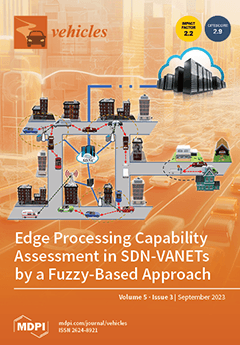Light-duty vehicles are increasingly incorporating plastic materials to reduce production costs and achieve lightweight designs. On average, a conventional car utilizes over 200 kg of plastic, comprising more than 23 different types, which often present challenges for recycling due to their incompatibility. Consequently,
[...] Read more.
Light-duty vehicles are increasingly incorporating plastic materials to reduce production costs and achieve lightweight designs. On average, a conventional car utilizes over 200 kg of plastic, comprising more than 23 different types, which often present challenges for recycling due to their incompatibility. Consequently, the focus on plastic recycling in end-of-life vehicles has intensified. This study aims to analyze critical car parts based on the plastics used, employing a novel thermodynamic approach that examines the embodied exergy (EE) of different plastics. Six vehicles from various segments, years, and equipment levels were assessed to understand their plastic compositions. The findings reveal that, on average, a vehicle contains 222 kg of plastic, accounting for 17.7% of its total weight. Among these plastics, 47.5% (105 kg) are utilized in car parts weighing over 1 kg, with plastics comprising over 80% of the part’s weight. The identified critical car parts include the front door trim panel, front and rear covers, fuel tank, floor covering, front lighting, dashboard, rear door trim panel, plastic front end, backrest pad, door trim panel pocket, plastic foam rear seat, rear lighting, window guide, molded headliner, bulkhead sound insulation, foam seat part, and wheel trim. Regarding their contribution to EE, the plastics with the highest shares are polypropylene—PP (24.5%), polypropylene and ethylene blends—E/P (20.3%), and polyurethane- PU (15.3%). Understanding the criticality of these car parts and their associated plastics enables targeted efforts in design, material selection, and end-of-life management to enhance recycling and promote circularity within the automotive industry.
Full article





